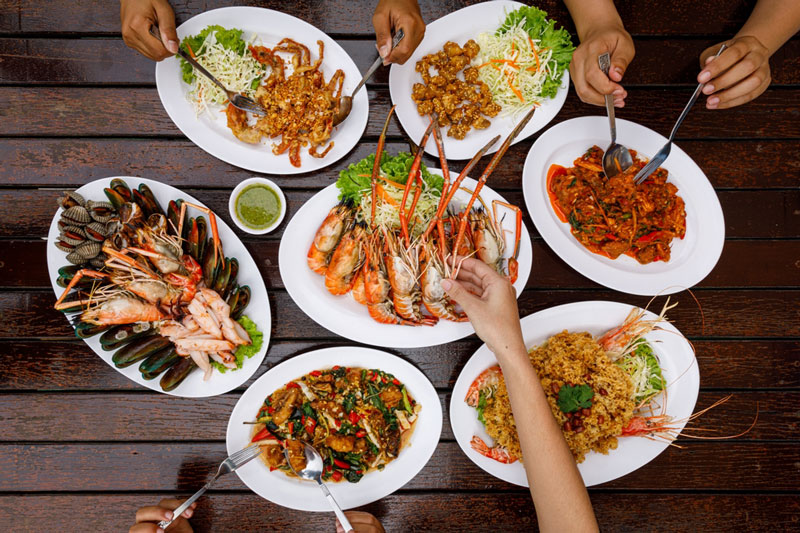Have you ever wondered what human foods are safe for our furry friends, the cats? While it might be tempting to share every delicious bite with them, not all human foods are suitable. Thankfully, there are various human foods that cats can eat, which can provide variety in their diet and even boost their nutritional intake. In this article, we will uncover the tasty options that cats can safely enjoy and discuss how to introduce these foods into their meals.
It turns out that some common human foods are not only safe for cats but can also be quite beneficial! Cats are obligate carnivores, meaning their diet mainly consists of meat. However, there are certain fruits, vegetables, and proteins that can complement their meal plans. As responsible pet owners, we must ensure that we make informed choices while feeding these delightful creatures.
So, if you’re keen to treat your feline friend with some tasty human foods, keep reading! We are excited to explore the wide range of options that allow you to safely share your food while keeping your furry buddy healthy and happy.
You might also be interested in: Can Cats Eat Canned Dog Food?
Human Foods That Cats Can Eat?

Let’s start by diving into some human foods that cats can eat. The list isn’t exhaustive, but it gives us a good starting point. First up are lean meats like chicken, turkey, and beef. Cooked without any seasoning or spices, these meats can be an excellent source of protein for our cats. It’s super important not to give them raw meat, as it may contain harmful bacteria.
Cats also enjoy canned tuna, but moderation is key! While it may be a favorite treat, too much tuna can lead to mercury poisoning in the long run. It should remain a special, occasional delight. On the other hand, small amounts of cooked eggs can be a nutritious boost for our feline companions. Just ensure they are cooked thoroughly to avoid any foodborne illnesses.
Fruits like blueberries and watermelon can give your cat a delightful change in taste. These are full of antioxidants and hydration. Ensure you remove any seeds or rinds before offering them. Some cat owners report that their feline friends enjoy crunchy veggies, such as carrots or green beans. While not all cats are keen on veggies, these can add a bit of fun and crunch to their diet!
How Much Human Foods Can Cats Eat?
When it comes to introducing human foods into a cat’s diet, moderation is essential. The general rule of thumb is to ensure that only about 10% of their daily caloric intake comes from these tasty additions. For example, if your cat eats around 200 calories a day, about 20 of those calories can come from human foods.
It’s also vital to gradually introduce new foods to avoid upset tummies. We can start by offering small pieces of cooked chicken or a couple of blueberries. Monitoring how your cat reacts to each new food is equally important. If they show signs of discomfort, it’s best to stop the treat immediately.
Consulting with a veterinarian before making any significant changes in your cat’s diet is a good idea. They can offer valuable insights tailored to your cat’s specific needs based on age, health, and activity level.
Don’t forget, the treats we offer should always be beneficial. Foods full of sugar or high-fat content should be avoided. Instead, focus on balance and offer these human foods only occasionally to ensure your cat maintains a healthy diet.
Benefits Of Human Foods To Cats
1. Nutritional Variety: Adding human foods can provide essential nutrients that commercial cat food may lack. For example, lean meats contain proteins that are vital for muscle development and overall health.
2. Bonding Experience: Sharing food can strengthen the bond between pets and their owners. Offering a bit of cooked chicken or egg can be a delightful experience and will make your cat feel more connected to you!
3. Weight Management: For overweight cats, introducing low-calorie fruits and veggies can help satisfy their appetite without adding excess calories, assisting in their weight management journey.
4. Hydration: Many fruits, like watermelon, are composed mainly of water. This can help keep your cat hydrated, especially if they are not keen on drinking water.
5. Enriching Trust: When we offer safe human foods, our cats begin to trust us more while exploring new flavors and textures. This enrichment is crucial for their mental health.
Dangers Of Feeding Human Foods To Cats
While there are many suitable human foods for cats, there are also some risks and dangers we should be aware of. For starters, certain foods like chocolate, onions, and garlic are toxic to cats and can lead to serious health issues. Symptoms may include vomiting, diarrhea, and lethargy, which require immediate veterinary help.
Feeding cats milk or dairy products might seem like a treat since many people think cats love milk. However, most cats lose the ability to digest lactose as they grow older, leading to stomach upset and diarrhea. Grapes and raisins are also unsafe for cats. They can cause kidney failure, which is dangerous and possibly life-threatening. Never hesitate to seek professional advice if you ever suspect your cat has eaten something harmful.
Additionally, any food with added salt, sugar, or artificial sweeteners can help make us realize that just because food is safe for us, it doesn’t mean it is safe for our furry friends. Giving unhealthy human foods can lead to obesity, diabetes, and other health concerns for our beloved companions.
It’s equally important not to go overboard with the human foods we offer. Even safe options should only be given in moderation. Feeding too much of anything can throw off our cat’s dietary balance, leading to unwanted health issues.
Substitute Of Human Foods For Cats
1. Meat Alternatives: If your cat isn’t a fan of traditional meats, consider cooked fish like salmon or sardines, ensuring they’re free of bones and served in small amounts.
2. Fiber Sources: If you want to add fiber to your cat’s diet, try steamed pumpkin or pureed squash. These can aid digestion and help prevent hairballs!
3. Healthy Treats: Instead of giving cat treats loaded with fillers and additives, why not offer small pieces of chicken or turkey? It’s a much healthier option!
4. Meal Toppers: Adding small amounts of cooked carrots or peas to commercial cat food can enhance flavor and nutrition without overpowering their main meal.
5. Alternate Proteins: If your cat cannot digest traditional meats, try alternatives like boiled lamb or turkey. Always cook thoroughly and avoid seasoning!
Human Foods That Cats Can Eat? Frequently Asked Questions
Can Cats Eat Fruits?
Certain fruits like blueberries, watermelon, and cantaloupe can be healthy treats for cats. Ensure you remove any seeds and give in moderation.
Are There Any Grains Cats Can Eat?
A small amount of cooked rice or oatmeal can be safe for cats. Grains shouldn’t form a large part of their diet since they are carnivores.
Can I Give My Cat Table Scraps?
Table scraps can be a gray area. While some may be safe, others can be harmful. Stick to safe foods and consult your vet for specific concerns.
Are There Any Safe Vegetables For Cats?
Yes, some cats can enjoy small amounts of cooked carrots, peas, or green beans as an occasional treat!
Can All Cats Eat The Same Human Foods?
No, individual cats have varying tolerances and dietary needs. Always introduce new foods slowly and check for any adverse reactions.
Final Thoughts
It’s pretty cool that there are so many human foods that cats can eat, making their diet more fun and varied! Remember to prioritize their health and safety by sticking to safe options and introducing new foods slowly. Our cats not only deserve a balanced diet but also enjoy tasty treats now and then.
Let’s keep the conversation going about our furry friends! Interested in learning more about what cats can and cannot eat? Check out our blog for more awesome insights. Don’t forget to explore what happens if cats consume corn! Your pet’s health is always worth the knowledge!


